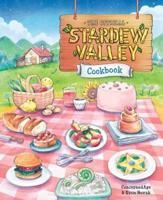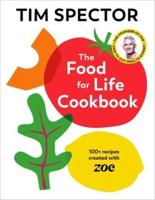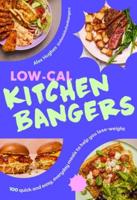Publisher's Synopsis
For many people, a limited food budget can be a real roadblock to healthy eating. It is an unfortunate fact of life that some of the lowest priced foods, from fast food value menus to cheap potato chips, are also some of the least healthy. It is possible, however, to create excellent tasting, nutritious meals, even on a tight budget.The key to planning and creating healthy meals on a limited budget is good forward planning and solid nutritional knowledge.
The shopping listAnyone who has visited a supermarket lately knows how dangerous it is to enter the store without a shopping list in hand. Shopping without a sense of what you need - and don't need - opens you up to all manner of temptation, and most of those tempting foods are not nutritious. In addition, picking up all those extra items can easily blow your food budget and leave you without the funds to plan those healthy, nutritious meals. A good trick is to keep a note pad near the table or refrigerator. Having the notepad within easy reach makes it easy to keep track of the foods you need to stock up on.
Watch those flyersMost major food store chains publish weekly sales ads, usually as inserts in the local newspaper. Keeping track of these sales, and taking advantage of the low prices to stock up, is a great way to gather a cupboard full of healthy food. Once the pantry is full of fruits, vegetables and other healthy fare, it will be much easier to create healthy recipes the entire family will love. In addition, locally grown, in season fruits and vegetables are usually more of a bargain than out of season or shipped fruits and vegetables.
Stock up on staplesEssential staple foods, such as flour, rice, and pasta are frequently put on sale as loss leaders at major groceries. Stocking up on these essentials when prices are low is a great way to stretch any food budget.
Never shop when you are hungryThe old advice to never shop when you are hungry is definitely true. Shopping when you are hungry is a sure way to give into temptation, bust the food budget, and stock up on all the wrong foods.
Become a label guruNutritional labels contain a wealth of information, but it is up to each shopper to read those labels and understand what they mean. Nutritional labels contain complete information on not just calories and fats, but the amounts of various essential vitamins and minerals as well. It is important to know how to read labels in order to get the best nutritional bang for your food bucks.
Pay close attention to package sizesJust because two cans look alike it does not mean they are. Packaging can be deceptive, so get in the habit of comparing weights when shopping for canned fruits, vegetables and other items. Also take advantage of the lower prices available on store brand and generic products.
Use coupons, but do it wiselyManufacturers coupons can be a great deal when used on products you already buy. Buying something simply because you have a coupon, however, is typically not a good idea.
Replace meat with beans and other less costly substitutes Eating less meat and more beans and lentils is a good way to save money on your food budget while still getting the protein you and your family need. Try experimenting with some vegetarian recipes for interesting ways to use these non meat alternatives.In addition to the tips listed above, there are several ways that smart shoppers keep their food budgets at a minimum while preparing delicious, nutritious meals for their family every day.One trick is to keep the refrigerator and the pantry well stocked with staple foods. Keeping a good supply of staples on hand will avoid unnecessary trips to the store and also avoid the need to buy such products when they are not on sale. When staples such as bread, flour, peanut butter, canned vegetables etc. are on sale, be sure to stock up.










